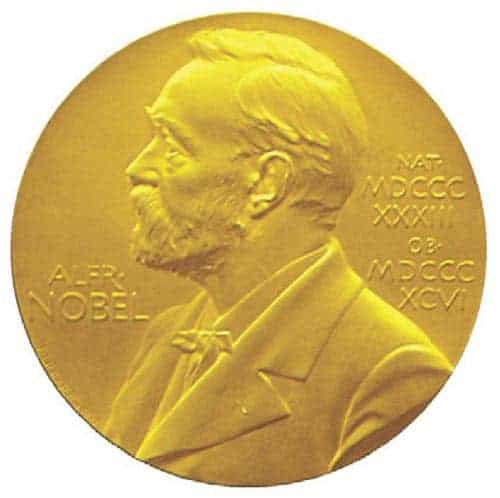The award of a Nobel prize can leave some deserving researchers empty-handed

In 1968 the late sociologist Robert Merton published a study in the journal Science in which he addressed how various “psychosocial” factors can affect the attribution of merit in science (Science 159 56). Drawing on insights provided by interviews with Nobel laureates, Merton realized that, contrary to popular perception, good things do not always come to those who scream Eureka! “They [Nobel-prize winners] repeatedly observe that eminent scientists get disproportionately great credit for their contributions to science,” he wrote, “while relatively unknown scientists tend to get disproportionately little credit for comparable contributions”.
Merton singled out the Nobel prize for perpetrating this scientific form of “the richer get rich, the poorer get poor”. Given that each prize cannot be awarded to more than three people, according to Alfred Nobel’s original terms, many worthwhile contributors miss out — not only in terms of prize money, but also in the history books. As Merton pointed out, the prize is blind to the fact that many of those who are snubbed “have contributed as much to the advancement of science as some of the recipients, or more”.
A stark example of this concerns the tangled story of the three physicists who discovered superfluidity: Peter Kapitza, Jack Allen and Don Misener (see “Superfluidity: three people, two papers, one prize”). Working in Moscow in 1938, Kapitza found that the viscosity of helium-4 dropped almost to zero when cooled to below 2.18 K — a clear sign that this material had become a superfluid. Kapitza, who was Russian-born, had originally made his name after moving to Cambridge University in the UK in 1921, but he was then forced to stay in the Soviet Union after being detained by the authorities during a regular trip back home in 1934.
Records reveal, however, that Allen and Misener — two Canadian researchers who had moved to Cambridge after Kapitza’s enforced detainment — also discovered superfluidity at the same. But four decades later, it was Kapitza who was awarded one half of the 1978 Nobel Prize for Physics; Allen and Misener remained empty-handed. While physicists gathering at this month’s 25th International Conference on Low-Temperature Physics in Amsterdam are likely to be aware of the Canadian pair’s contributions, it is Kapitza who is best known to the wider world.
The truth is that a Nobel prize, rightly or wrongly, confers a special status on its recipients. Just ask Douglas Osheroff, who shared the 1996 prize with David Lee and Robert Richardson for discovering superfluidity in helium-3. As Osheroff points out in an interview given during this year’s annual meeting of Nobel laureates in Lindau, Germany (see “Inspired thinking”), winning the prize gives him a platform to talk about issues — like climate change — that lie well beyond his research expertise.
That is not to say that Osheroff’s discovery of superfluidity in helium-3 was not worth a Nobel prize. It may not yet have any obvious practical applications, but then neither did the discovery 100 years ago by the Dutch physicist and future Nobel laureate Heike Kamerlingh Onnes that helium could be liquefied. His lab techniques led to him discovering superconductivity and kick-started the global cryogenics industry. It is Onnes, Osheroff and Kapitza who will be remembered, while the likes of Allen and Misener may well end up, perhaps unfairly, as mere footnotes to history.


